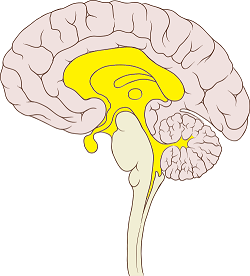Chapter 1: The Inner Game – How Your Brain Works in the Open Water (and elsewhere)
Here’s a quick exercise I want you to do right now. Take your right hand and make a fist. Now take your left hand and wrap it over your right one. What you’re looking at is a pretty good representation of your brain. Or rather your three brains – your physical, emotional, and logical brains.
And understanding how these three brains work is essential to your success as an open water swimmer – or your success in just about anything else for that matter.
So let’s take a quick look at each one.
Physical brain
This area encompasses your upper brainstem and is roughly analogous to your right lower arm and wrist in our model. Your physical brain (also known as your “reptilian” brain) consists of several structures that manage and regulate autonomic physical functions such as the following:
– Alertness and arousal
– Breathing and heart rate
– Blood pressure and digestion
– Body temperature and thermoregulation
– Basic survival behavior responses
Emotional brain
This area encompasses your limbic system and is roughly analogous to your right fist in our model. The emotional brain consists of several structures that regulate motivation, emotions, and memory formation, and it is instrumental in the following:
– Fear, anger, and aggression (“fight or flight” response)
– Pleasure, reward, and reinforcement
– Memory and learning
– Sensory perception and filtering
– Attentional processing
Logical brain
This area encompasses your neo-cortex and is roughly analogous to your left hand in our model. The logical brain consists of the layer of the brain often referred to as gray matter, and it is instrumental in the following:
– Logic and reasoning
– Problem solving and decision making
– Planning and foresight
– Introspection and creativity
– Performance excellence
So why is all of this important, you might ask?
Because 80% of the challenge involved with open water swimming is in effectively managing the physical and emotional parts of our brains – and NOT the logical part.
In other words, you can set detailed swimming goals and make meticulous plans for achieving them – but all of this will collapse if you can’t get your physiology and your emotions on your side.
Whenever I do a swim seminar or one-on-one coaching, this is typically the first area we cover in detail. And the reason for this is that it’s very easy for an athlete to get accustomed to having his or her logical brain in control whenever they are training in an indoor pool.
Think about it – this is a controlled and structured environment with no stressors or surprises. So you can “logically” pound out your precisely formulated workout without all the inconveniences of wind, waves, cold water, or the myriad of other niceties that manifest themselves in the messy realm of Mother Nature.
The challenge lies when you thrust this logic-based swimming “wiring” into a setting that requires much more mastery of the physical and emotional parts of your brain.
And what usually happens in this scenario is that the stress of the situation overwhelms the logical brain, and the emotional and/or physical parts take over.
So as you can see, understanding and managing the physical and emotional parts of your brain is very often the key to excellence in the open water. And as we continue learning more about managing and mastering winter swimming we’ll re-visit this concept often.


